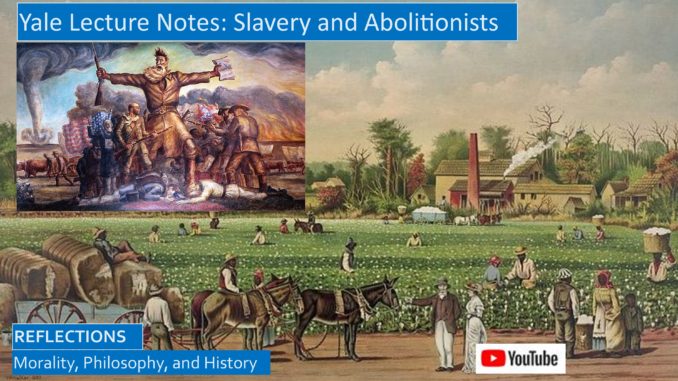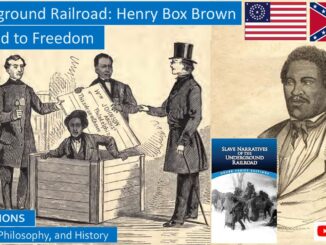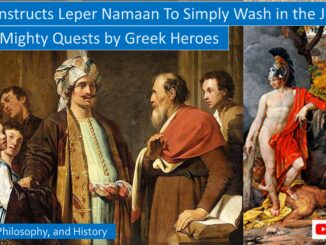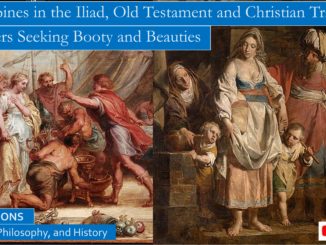
The objective of these blogs are to educate the reader about the history of Jim Crow and the civil rights struggles of America. This was a bloody history, the prospect we might regress closer to the days when blacks were brutally lynched without any hope that the murderers would be brought to justice is frightening. This callousness was enabled because many whites in this bygone culture did not see blacks as real people, whites refused to treat blacks with dignity as equals. So we will try to tell this history with stories showing these blacks and former slaves as real people with dreams, innocent people who truly suffered from many miscarriages of justice.
Perhaps this objective is a bit quixotic. Eric Foner once got a phone call from a reporter who asked: “Professor Foner, when did all this revisionism begin?” And Foner said, “Probably with Herodotus.” And the reporter asked, “Do you have his phone number?” (Hint: Herodotus never had a phone number.) As Mencken reminds us, Never underestimate the ignorance of the American people.[1]
Our primary source are the Yale lectures by Professors Holloway and Blight. Jonathon Holloway is a Yale professor whose chosen academic field is black history, a topic he chose as a teenager. These are his undergraduate lecture on African-American history:
https://www.youtube.com/watch?v=Fp6mjKumW2g&list=PLh9mgdi4rNeyqnC6Gj5VCZERhhy9CC1S6
The classroom notes and suggested reading are at:
https://oyc.yale.edu/NODE/46
YouTube video for this blog: https://youtu.be/kmLg8CDjOOY
Professor David Blight’s lectures on The Civil War and Reconstruction Era 1845-1877 have a different perspective. He gives us background on Southern culture for the first few lectures, the following history lectures quickly pick up the pace. He covers many topics more important for American history like the pre-Civil War history of the Polk administration and the acquisition of Texas and California, Henry Clay and the Compromise of 1850, and how the Republican Party formed from the ashes of the Whig, Free Labor and other parties.
https://www.youtube.com/watch?v=QXXp1bHd6gI&list=PL5DD220D6A1282057
The classroom notes and suggested reading are at:
https://oyc.yale.edu/history/hist-119
The Yale lectures are easier to rack up and listen to in your car or bike on Facebook that on the Yale University site.
Also excellent are Eric Foner’s lectures on Reconstruction. Unfortunately, his lectures have no transcripts, so they are not included in this blog. He wrote the definitive history on Reconstruction which we plan to review in a future blog, along with WE Dubois’ history on Black Reconstruction.
https://www.youtube.com/watch?v=ZQhbB6-cT3Y&list=PLSuwqsAnJMtypyVdc5V3dz9yWo6pIrGvT
There is also a YouTube session where David Blight interviews Eric Foner:
https://www.youtube.com/watch?v=cEGLKXAabS4&t=63s
Rather than repeat all the topics in these courses, or worry about summarizing a connected history, this blog will highlight interesting stories and histories from these lectures. If you find my blog disconnected, please listen to the lectures.
FREDERICK DOUGLAS – BLACK ABOLITION ACTIVIST
After escaping slavery in Maryland, Frederick Douglas was leader in the abolitionist community before, during, and after the Civil War. Not only was Frederick Douglas literate, he was an excellent writer, writing several autobiographies of his life as a slave and his escape and many other works, and he was a spell-binding speaker in an age where speakers were called on to deliver speeches that could last hours. Perhaps his least noticed contribution to abolition was that he was living proof that black men, when educated, could match their white brothers in intellectual achievement.
Jonathon Holloway’s course opens with excerpts of a three-hour speech given by the freed slave and thundering orator, Frederick Douglas, on July 5th, 1852, before the Civil War, to his abolitionist friends. He was invited but refused to speak on the July 4th holiday, arguing that for the negro July 4th was neither a holiday nor a day to remember freedom, since the great majority of negroes were bound in chains as slaves regarded as nothing more than intelligent livestock, property of their masters.
Frederick Douglas started his speech: “Fellow citizens, pardon me, and allow me to ask, why am I called upon to speak here today? What have I or those I represent to do with your national independence? Are the great principles of political freedom and of natural justice, embodied in that Declaration of Independence, extended to us?”
“I (as a black man) am not included within the pale of this glorious anniversary! Your high independence only reveals the immeasurable distance between us. The blessings in which you this day rejoice are not enjoyed in common. The rich inheritance of justice, liberty, prosperity, and independence bequeathed by your fathers is shared by you, not by me. The sunlight that brought life and healing to you has brought stripes and death to me. This Fourth of July is yours, not mine. You may rejoice, I must mourn.”
“To drag a man in fetters into the grand illuminated temple of liberty and call upon him to join you in joyous anthems, were inhuman mockery and sacrilegious irony. Do you mean, citizens, to mock me, by asking me to speak today? What to the American slave is your Fourth of July? I answer, a day that reveals to him more than all other days of the year, the gross injustice and cruelty to which he is the constant victim.”
“To him your celebration is a sham; your boasted liberty an unholy license; your national greatness, swelling vanity; your sounds of rejoicing are empty and heartless; your denunciations of tyrants, brass-fronted impudence; your shouts of liberty and equality, hollow mockery; your prayers and hymns, your sermons and thanksgivings, with all your religious parade and solemnity, are to him mere bombast, fraud, deception, impiety, and hypocrisy, a thin veil to cover up crimes which would disgrace a nation of savages. There is not a nation of the earth guilty of practices more shocking and bloody than are the people of these United States at this very hour.”
Americans owned slaves in all thirteen colonies in the Revolutionary War era and for many decades afterwards. Slavery was most cruel on the large plantations in the Southern states where hundreds of slaves, anonymous as cattle herds, slaved in the fields.
Professor Holloway tells the little-known story of an obscure slave named John Jack. John Jack was captured and bound in chains in Africa and survived the Middle Passage on dark slave ships. As many as half of the slaves died during this journey to the Americas. He was fortunate to be purchased by a “kind master” who taught him a trade as a cobbler and allowed him to keep a small portion of his earnings, a privilege provided to a few slaves mostly in the Northern states. After many years he purchased his freedom and bought a small subsistence farm, but although he was free and a property owner, he was still denied the right to vote, he was a second class citizen, and eventually drank himself to death in his misery.
John Jack leaves us his epitaph on his gravestone as a testimony to his life. “God wills us free. Man wills us slave. I will as God wills. God’s will be done. Here lies the body of John Jack, native of Africa, who died March 1773, aged about 60 years. Though born in the land of slavery, he was born free. Though he lived in a land of liberty, he lived a slave, till by his honest though stolen labors, he acquired the source of slavery which gave him his freedom. Though not long before Death, the grand tyrant, gave him his final emancipation and set him on a footing with kings. Though a slave to vice, he practiced those virtues without which kings are but slaves.”
Professor Holloway displays images of Confederate scrip money. These scrips often have two motifs common in Confederate mythology, images of happy black slaves carrying bales of cotton, and images of exalted white womanhood that deserve to be protected.
When Abraham Lincoln met Harriet Beecher Stowe, he remarked, So you are the little lady whose little book started the Civil War. This book, Uncle Tom’s Cabin, was the best-selling book by far in 1852, eventually selling over a million copies, galvanizing Northern opinion about the horrors of slavery. This romantic novel from the point of view of ordinary slaves, and it really promoted the concept that the lives of even slaves should have dignity, they were not just mere property like cows or horses, that slaves could the heroes and heroines of a tragic novel allowing the reader to imagine the horrors of a life lived bound in chains, of souls bound in cruel inequities, of human beings bound in a life of unending cruelties.[2]
The antithesis of Uncle Tom’s Cabin was the Supreme Court decision in Dred Scott vs Sanford in 1857. Dred Scott was a slave who sued his master for his freedom as his master moved him and his family between slave states and free states that banned slavery under the Missouri Compromise law. The Southern Chief Justice Roger Taney held that no negro had ever enjoyed the rights of a citizen under the Constitution. Negroes were denied the dignity of personhood, negroes were always property and would also remain property, negroes were declared by the Supreme Court decision to be “so far inferior that they had no rights which a white man was bound to respect.” This decision, which denied that the Constitution gave Congress the right to bar slavery in the territories, enraged public opinion in the North, bolstering the popularity of Lincoln and the Republican Party.[3]
In the years following the Civil War the Lost Cause myth was promoted, the claim that the Civil War was fought over states’ rights, that the Civil War was NOT fought over slavery. If that was true, somebody did not properly inform Alexander Stephens, the Vice President of the Confederacy, about the aims of the Civil War. During Secession and the forming of the Confederacy, Alexander Stephens, a Georgian, a slaveholder, an old friend and colleague of Abraham Lincoln’s, proclaimed in this Cornerstone speech in 1861: “As a race, the African is inferior to the white man. Subordination to the white man is his normal condition. He is not his equal by nature and cannot be made so by human laws or human institutions. Our system, therefore, so far as regards this inferior race, rests upon this great immutable law of nature.”
In the years before the Civil War the frontier cotton plantations in Alabama and Mississippi were more prosperous, many slaves were sold from the older colonies to these new plantations. Between 1820 and 1860 children born to slaves in the Upper Southern Seaboard regions had a thirty percent chance of being sold without their parents before they reached the age of ten. From David Blight’s lecture:
But it’s amazing to read the letters and the language of slave traders when they write to each other, the complacency, the mixture of just pure racism on the one hand and just business language on the other. “I refused a girl 20-years-old at $700.00 yesterday,” one trader wrote to another in 1853. “If you think best to take her at 700, I can still get her. She is very badly whipped but has good teeth.” “Bought a cook yesterday,” wrote another trader, “Bought a cook yesterday that was to go out of the state. She just made the people mad, that was all.” “I have bought a boy named Isaac,” wrote another trader, “for $1100.00.” He writes this in 1854 to his partner. “Bought a boy named Isaac. I think him very prime. He is a house-servant, first-rate cook, and splendid carriage driver. He is also a fine painter and varnisher, and says he can make a fine panel door. Also, he performs well on the violin. He is a genius. And strange to say, I think he’s smarter than I am.”[4]
In 1860 Abraham Lincoln was elected President, but in 1859 the self-designated savior of the slaves, John Brown, organizes a small band of blacks and whites that captures the federal arsenal at Harper’s Ferry, Virginia. Frederick Douglass told him he was crazy. Harriet Tubman thought he was crazy. John Brown did not have much of a plan, after he seized the weapons in the arsenal he had no way to spread the news of the slave rebellion to the slaves in the surrounding plantation, and how many would swarm to the arsenal anyway? US Army General Robert E Lee easily put down the rebellion, John Brown is wounded, but he is allowed to deliver many long soliloquies during his trial, after which he is hanged.[5]
John Brown was a martyr, to this day there are many who think he was black, sometimes you can’t budge some blacks from this belief, but he was the rare white martyr willing to sacrifice his life to attempt a black uprising.
David Blight covers John Brown in several lectures, these are excerpts:
John Brown was a troubled man, he was a morbid man, he was an Old Testament man, but he probably was not crazy, as so many people said at the time, and people have said ever since. His altruism on behalf of black people was not utterly selfless, but he was an extraordinary example of an American, a white American, who put his money where his mouth was–he didn’t have any money–put his life where his mouth was, and took it into the South. Now, he was executed, hung out in a field, outside of Charleston, Virginia, guarded by some 3,000 American troops. There were all kinds of fears of attempts to break him out and seize him by Northern Yankee bands. There were all kinds of threats.
David Blight continues:
John Brown was the South’s oldest, greatest, worst fear. An abolitionist from the North with a band of men and a bunch of weapons invading the South and trying to incite slave insurrection–they’ve been kind of predicting this all along and lo and behold it happened. In a trunk of stuff back at the farm in Maryland that he had rented for several months, where his men had gathered, after his capture was found a whole stash of letters and maps. The old man had kept all kinds of maps of the South. He had maps of sections of Alabama, Georgia. He even had x’d certain towns on those maps. When these maps were found, and the press got hold of these, all over the South, these stories spread and local newspapers would print stories about the maps of their county or their section of a state. There was hysteria. Northern teachers, working in the South, were tarred and feathered. An itinerant piano tuner in Tennessee was lynched because he was from Massachusetts. Fear set in across the South that there were going to be other abolition emissaries–that was always the term used. And there were predictions and threats of all kinds, especially in South Carolina. John Brown when he–and he did read some of these newspapers–must have smiled.[6]
Later in 1860, at the Democratic National Convention, the Democratic Party split into a southern and northern wing over the issue of slavery. In addition to these two parties and the Republican Party, there was also unity party of the border states. In the national elections Abraham Lincoln won the majority of votes in the Electoral College, although since there were four parties in that pivotal year, Lincoln did not win a majority of the popular vote. Several southern stated seceded before Lincoln was inaugurated, the Civil War had begun.
PARTING QUESTIONS AND ANXIETIES
How can so many church goers blindly support Trump although Trump is the antithesis of Christianity? Many Christians who feel alone in their opposition find hope in this editorial of the leading magazine Christianity Today:
https://www.christianitytoday.com/ct/2019/december-web-only/trump-should-be-removed-from-office.html
This is our blog on how slaves helped the North win the Civil War:
http://www.seekingvirtueandwisdom.com/stories-of-how-slaves-helped-the-union-win-the-civil-war-yale-lecture-notes/
This is our blog on how black ex-slaves struggled in the Reconstruction and Redemption eras:
http://www.seekingvirtueandwisdom.com/post-civil-war-reconstruction-and-redemption-history-yale-lecture-notes/
This is our blog on the American Civil Rights history following the Reconstruction and Redemption eras:
http://www.seekingvirtueandwisdom.com/american-civil-rights-history-yale-lecture-notes/
We also encourage you to read our complete set of blogs on slavery in both the Deep South and ancient worlds:
http://www.seekingvirtueandwisdom.com/category/slavery/
I could not bring myself to vote for Obama in the 2008 Presidential election, nor could I vote for the Republicans whose mendacity and total failure to exercise meaningful regulation of the financial and trading markets helped bring on the Great Recession.
But I eagerly voted for Obama in the 2012 Presidential Election, and switched my allegiance to the Democratic Party after voting in the 2010 midterm elections. The reason was the Tea Party was quickly taken over by white supremacists, and what totally turned me off was the total lack of respect that Republican congressman and senators showed for President Obama. President Obama will be remembered as one of our greatest presidents, not so much because of what he did, but for who he was. Though he was able to rescue the American economy from another Great Depression, with the help of outgoing Bush administration officials, and though the Democrats enacted ObamaCare, after the mid-term elections Obama accomplished little, because unlike Jackie Robinson, the Republican Congress did not allow him his place at the plate, they did not allow Obama his turn at bat.
Donald Trump is the Tea Party in your worst nightmares. What terrifies me so much about Trump and the Republicans is now today’s history reminds me so much of the horrifying history of post-Civil War Reconstruction and Redemption. The word “Redemption” itself is haunting, after the Great Compromise of 1787 when federal troops were withdrawn from the South and white supremacists and the KKK were left free to lynch and intimidate negroes, first denying blacks the right to vote, then denying blacks the right to decent jobs, decent housing, decent healthcare, decent education, and denying blacks their very dignity as people.
[1] David Blight, Yale Civil War and Reconstruction, Lecture 1, YouTube website link in beginning of blog
[2] Jonathon Holloway, Yale African-American History: Emancipation to the Present, Lecture 1, YouTube website link in beginning of blog
[3] Jonathon Holloway, Yale African-American History: Emancipation to the Present, Lecture 2
[4] David Blight, Yale Civil War and Reconstruction, Lecture 3
[5] Jonathon Holloway, Yale African-American History: Emancipation to the Present, Lecture 2
[6] David Blight, Yale Civil War and Reconstruction, Lecture 10




14 Trackbacks / Pingbacks